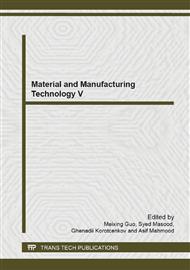p.3
p.9
p.15
p.20
p.26
p.33
p.38
p.43
Electrophoretic Deposition of Titanium Dioxide (TiO2) Nanoparticles on Ceramic Membrane
Abstract:
The purpose of this study is to understand the electrophoresis of Titanium dioxide (TiO2) nanoparticles on ceramic membrane. The ceramic substrate was prepared using commercial ceramic filter. The effect of different types of solvent used for suspension was studied. Then, the solvent that give optimum formulation for deposited microstructure on ceramic electrode from the first stage experiment is used to study the effect of concentration on the deposition behavior of TiO2 nanoparticles during EPD technique. All the TiO2 suspension were had been characterized using Zetasizer nanoseries. The EPD was performed at 20 V DC field for 10 minutes. The deposited of TiO2 from both stage of experiment were then analyzed using ESEM. The suspension in organic solvent was found to obtain more deposited particles on ceramic membrane compared to water-based suspension. While, the concentration with 0.5 wt % TiO2 nanoparticles with zeta potential 53.6 mV was found to get smaller size and uniform microstructure. The adhesion of the TiO2 deposited layer from entire of the result on the ceramic electrode was fairly good.
Info:
Periodical:
Pages:
20-25
Citation:
Online since:
June 2014
Authors:
Price:
Сopyright:
© 2014 Trans Tech Publications Ltd. All Rights Reserved
Share:
Citation:


